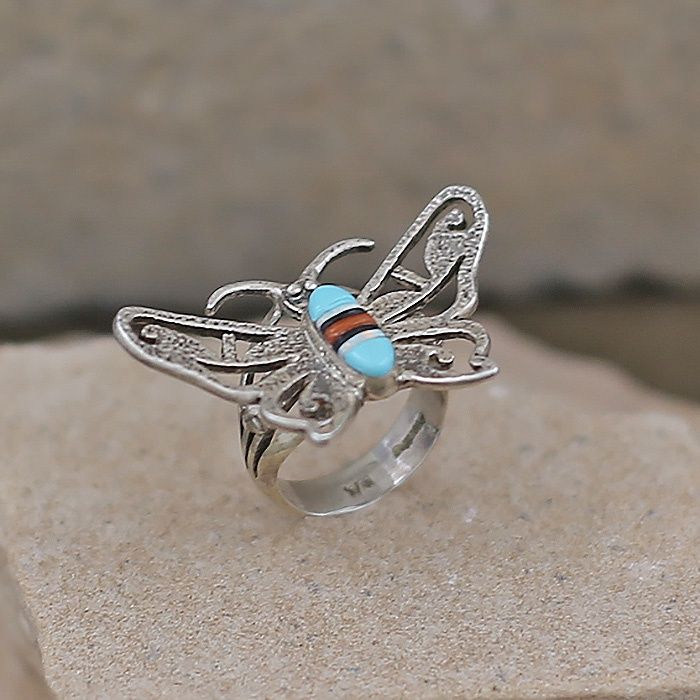Navajo tufa cast butterfly inlay ring
Navajo handcrafted ring. It features a method called tufa casting to create its unique texture and design. Due to the process, the is very heavy for its size.A beautiful detailed butterfly with multi color inlay stones is the focal point of the ring. I inlayis mounted high in the setting and polished to a gloss finish. If your looking for a one of kind ring made in one the oldest methods of making jewelry then this may be the one. This is one of our finest ring.
Materials: Turquoise, cultured opals, coral, jet and sterling silver
Measurements: mounting-1-1/2" x 1"
Tufa Cast: The process involves many steps, starting by cutting a stone in half and grinding both halves until smooth on the cut side. The tufa stone is sometimes soaked in water to keep dust down and to make it carved in reverse on one of the smoothed halves. Then a cone shaped channel is carved from one edge of the design to the outer edge of the stone. A corresponding channel is carved on the other half. When the two halves are fitted together, this channel becomes the passageway by which the molten silver is poured into the mold. Superheated air trapped in the mold can ruin a design. To prevent this, vents are carved from the extremities of the design out toward the edge of the stone, allowing the air to escape. The stone mold is heated with a torch until it is carbon smoked on the inside of both halves. This prevents the silver from sticking to the mold. The mold is now ready for casting.
The two pieces of the tufa stone are placed together with the pour channels aligned. Originally the pieces were held together by placing strips of wet leather around the stone. As the leather dried, though, it would shrink slightly and bind the two pieces of stone tightly together. Today, artisans use a number of methods, such as wrapping with wire, plywood board and clamps, or rubber straps.

